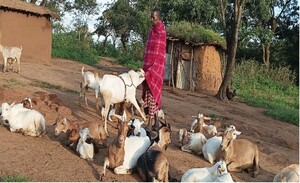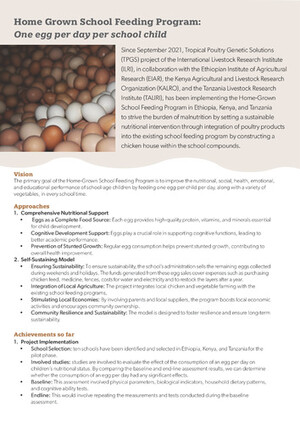
Morphological and osteological characterization of indigenous domestic chickens (Gallus gallus domesticus): Validation of Rensch’s, Bergmann’s and Allen’s rules
Abstract
Ecogeographical habitat heterogeneity in wild endotherm species results in morphological variability associated with physiological mechanisms for maintaining their body temperature at a thermoneutral state in different environments. This habitat-induced morphological variation has led to the proposal of three main ecogeographical and biological rules (Rensch, Bergmann, and Allen). Whether or not domesticated animal species, under the care and management of humans, follow the same rules has not yet been investigated in detail. In this study, we randomly sampled 333 adult indigenous chickens (Gallus gallus domesticus) from three habitats representing the highland, midland and lowland agro-ecologies in the Tigray Region (Ethiopia). We aimed to assess the importance of Rensch’s, Bergmann’s, and Allen’s rules in shaping their morphology and osteology. For Bergmann’s and Allen’s rules, we analyzed the morphological characteristics of 297 (208 female, 89 male) and the osteological characteristics of 36 (19 female, 17 male) indigenous chickens. For the morphological validation of Rensch’s rule, we used 89 male chickens and randomly selected 89 female chickens, while for the osteological validation, 17 male and female chickens were analyzed. Chickens from the lowland agro-ecology (warm climate) had a smaller body mass index (BMI) and larger appendages, while chickens from the highland agro-ecology (cold climate) had a larger BMI and smaller appendages (Bergmann’s and Allen’s rules). Morphological and osteological sexual dimorphism were observed, with the male chickens being larger than the female chickens and with size differences proportional to the body size (Rensch’s rule). In both sexes, regression analysis showed a relationship between BMI and altitude as well as temperature. Shank length, wingspan, and the length and surface area (earlobe, wattle, and beak) of the appendages were significantly associated with climatic variables. Moreover, our regression model revealed that wingspan and shank length could be predicted from the greatest length of the humerus and tarsometatarsus. Our findings support the idea that indigenous chickens’ adaptation mechanisms to environmental challenges largely agree with the expectation of Rensch’s, Bergmann’s, and Allen’s biogeographical rules across the different altitudinal habitats of the Tigray Region.
Citation
Gebru, G., Belay, G., Dessie, T., Zenebe, M., Dagnhegn, B. and Hanotte, O. 2023. Morphological and osteological characterization of indigenous domestic chickens (Gallus gallus domesticus): Validation of Rensch’s, Bergmann’s and Allen’s rules. Frontiers in Ecology and Evolution 11:1032082.










